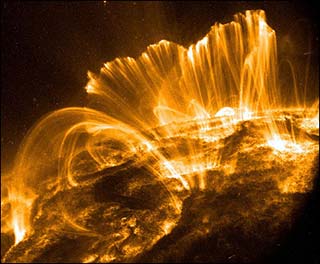As the Sun is entering its active period from the 11-year cycle, more and more such events are being reported. A long-lasting solar flare erupted from the sun early Saturday, triggering a huge solar flare aimed at our planet. But there’s nothing really to be feared, astronomers explain: it should not endanger satellites or astronauts in space, but could amplify auroras on Earth, NASA says.

“In the past, CMEs at this strength have had little effect,” NASA officials said in a statement. “They may cause auroras near the poles but are unlikely to disrupt electrical systems on Earth or interfere with GPS or satellite-based communications systems.”
The event was captured in pictures by the Solar and Heliospheric Observatory (SOHO), a joint effort by NASA and the ESA. It typically takes three days for flares to reach our planet, and when they do, they can generate geomagnetic storms when they interact with out planet’s magnetic field. As NASA explains however, this storm will only have a pleasant visual effect.
“We live right next to a star,” wrote Canadian astronaut Chris Hadfield, who currently lives on the International Space Station, in a Twitter post. “Today it ejected a huge blob at 500 mi/sec. But not to worry – should be good aurorae.”
Was this helpful?